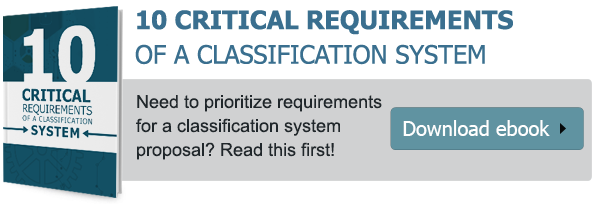Community Tip - When posting, your subject should be specific and summarize your question. Here are some additional tips on asking a great question. X
- Community
- PLM
- Windchill Discussions
- FIVE BEST PRACTICES FOR PART CLASSIFICATION
- Subscribe to RSS Feed
- Mark Topic as New
- Mark Topic as Read
- Float this Topic for Current User
- Bookmark
- Subscribe
- Mute
- Printer Friendly Page
FIVE BEST PRACTICES FOR PART CLASSIFICATION
- Mark as New
- Bookmark
- Subscribe
- Mute
- Subscribe to RSS Feed
- Permalink
- Notify Moderator
FIVE BEST PRACTICES FOR PART CLASSIFICATION
- Define a classification structure
- Identify critical attributes
- Prioritize parts/material to migrate
- Don’t get hung up on creating the structure - begin with the end in mind
- Leverage resources - smart part numbers, description fields, commodity codes, suppliers, etc.
Using a classification structure to group similar parts
To cleanse and normalize data for similar parts, they need to share the same naming conventions, attribute profiles, and attribute value lists. A classification structure can be used to address this issue. Normalizing is the process of making similar items look similar.
You don’t want to be cleansing similar parts independently of each other, so they should be done together – against a single data model or part classification structure.
The classification structure will help enforce that all similar parts will be described in the same way. Not only will parts share the same attributes, the values for each attribute will have the same format. For example – material attributes will have the same list of materials for each part. The descriptions will have the same format.
Don’t get hung up on creating the classification structure
To limit the debates on what your classification structure should look like, limit the number of people involved in making those decisions. For common purchased parts, try to use industry standard structures use by consortiums like ECCMA, eClass, PIDX or reference popular online catalogs and use their structure. It’s not worth the time recreating the wheel. The most important thing is not where a category belongs in the structure but the attributes that define that structure too. Most searches tend to be key word searches and not based on classification structure.
Identify the most critical part/raw material attributes
It’s very easy to get carried away and want to have an attribute for every characteristic of a part. The more attributes you use will increase the data cleansing effort. You will want to determine which attributes are the most critical, and shrink the list or make the less important attributes optional. To determine the most critical attributes, simulate a search scenario – what is the minimal information you need to find a critical part or raw material. If you cross reference a drawing, users can always look at that drawing to find out more detailed information on that part.
Determine the most critical parts/materials first
To obtain the most value for your organization, identify the parts that are the most important. Those are typically parts or materials shared in every product across multiple business groups. They can also be the parts that represent the biggest spend. Starting with those parts first will help get your data cleansing initiative the most visibility, allowing it to have a big impact right away.
Leverage resources - smart part numbers, description fields, commodity codes, suppliers, content providers, etc
There are many techniques, tools and resources you can leverage to help expedite data cleansing that you may want to consider. Smart part numbers, commodity codes, descriptions are fields you can use to help group similar parts and extract data. Reverse engineer a smart part number to obtain critical attribute data. Parse descriptions to provide a jump start to data cleansing. Leverage the services of data cleansing services and content providers to obtain cleansed data quickly. It may be more economical and timely to pay a third party versus using internal resources, especially if the data already exists e.g. standard purchased parts containing manufacturing part numbers






